How to Grow Cranberries: Expert Techniques for Every Season
- March 25, 2024
- 2 comment
How to Grow Cranberries guides beginners through the rewarding journey of cultivating these tart, vibrant red berries, celebrated for their health benefits. From the initial planting to the final harvest, this comprehensive guide covers the unique challenges and essential steps involved in cranberry gardening. It invites gardeners to expand their horticultural experiences beyond common fruits and vegetables, promising a bountiful and rewarding harvest for those willing to explore the nuances of growing this distinctive crop.
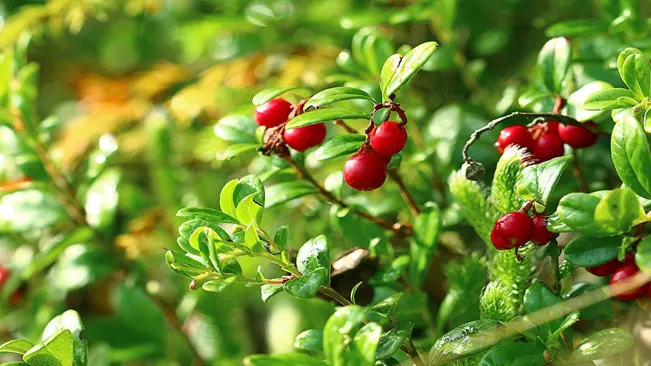
Benefits of Cranberries
| Benefit | Description |
|---|---|
| Rich in Antioxidants | Cranberries are loaded with antioxidants, which help protect cells from damage caused by free radicals, potentially reducing the risk of chronic diseases. |
| Urinary Tract Health | The proanthocyanidins in cranberries prevent bacteria from attaching to the lining of the urinary tract, helping to prevent and treat urinary tract infections (UTIs). |
| Digestive Health | Cranberries contain dietary fiber and compounds that promote good digestive health and can prevent harmful bacteria from growing in the stomach. |
| Heart Health | Regular consumption of cranberries can improve heart health by reducing blood pressure, decreasing LDL (bad) cholesterol, and increasing HDL (good) cholesterol. |
| Dental Health | The same proanthocyanidins that help with urinary tract health also prevent bacteria from sticking to teeth, reducing the risk of gum disease and cavities. |
| Anti-inflammatory Properties | Compounds in cranberries have anti-inflammatory properties, which may benefit conditions like arthritis and reduce swelling in the body. |
| Immune System Support | Cranberries are rich in vitamin C, which is essential for a healthy immune system, helping to ward off infections and diseases. |
| Cancer Prevention | Some studies suggest that the nutrients in cranberries can slow tumor progression and have a positive effect against certain types of cancer. |
| Skin Health | The vitamins and antioxidants in cranberries can contribute to healthier skin, helping to combat the effects of aging and environmental damage. |
| Blood Sugar Control | Cranberries have a low glycemic index and can help in controlling blood sugar levels, particularly beneficial for individuals with diabetes. |
List on How To Grow Cranberries
- Understanding Cranberry Plants
- Choosing the Right Site
- Planting Cranberries
- Maintenance and Care
- Flooding for Pest Control and Harvest
- Harvesting Cranberries
Understanding Cranberry Plants
Cranberries (Vaccinium macrocarpon) are perennial, low-growing vines native to North America. They thrive in acidic, well-drained soil and are commonly grown in bogs or wetlands. Cranberry plants also have unique water requirements, benefiting from a technique called flooding.
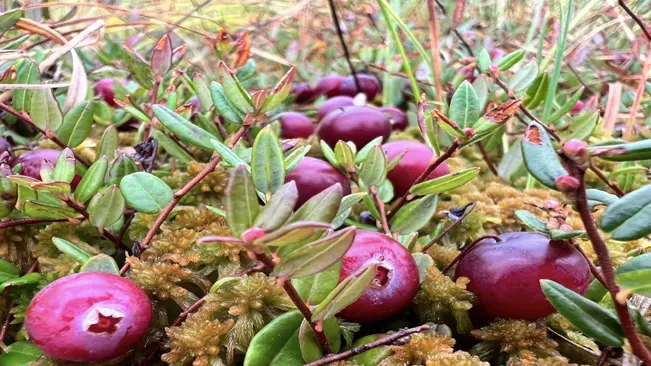
Scientific and Common Classification
- Scientific Name: Vaccinium macrocarpon
- Common Name: Cranberry
- Family: Ericaceae, commonly known as the heath or heather family.
Growth Characteristics
- Perennial Nature: Cranberries are perennials, meaning they live for more than two years, providing a long-term crop once established.
- Growth Habit: They are low-growing, trailing vines. The vines spread horizontally over the ground and can reach up to 7 feet long, but only grow about 6 to 8 inches high.
Cultivation Environment
- Soil: Cranberries require acidic soil, with a pH ideally between 4.0 and 5.5. The soil should be well-drained, sandy, and rich in organic matter.
- Bog and Wetland Cultivation: Traditionally, cranberries are grown in bogs, which are natural wetlands. These environments are characterized by layers of sand, peat, gravel, and clay. This method has been used for centuries, first by Native Americans and later by settlers.
Choosing the Right Site
Soil Requirements
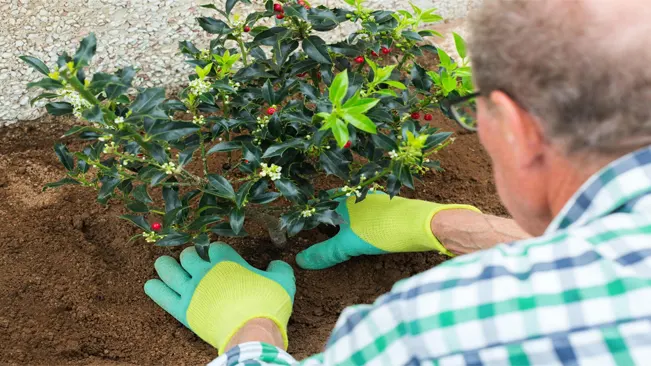
- Importance of pH: Cranberries require acidic conditions for optimal growth. Soil pH affects nutrient availability, and in the case of cranberries, a more acidic soil helps in nutrient uptake, particularly iron.
- Testing and Amending Soil: Before planting, it’s essential to test the soil’s pH. If it’s above 5.5, you need to lower it. This can be done by incorporating sulfur into the soil. The amount of sulfur needed varies based on the soil type and current pH level, so it’s recommended to follow guidelines provided by a local agricultural extension.
- Soil Composition: In addition to pH, the soil should be well-drained yet able to retain moisture. Peat soil is often preferred as it mimics the cranberry’s natural bog habitat. If drainage is poor, consider raised beds or sand amendments.
Water Source
- Frequent Watering: Cranberries have shallow root systems and require consistent moisture. They don’t tolerate drought well.
- Flooding: Flooding is a traditional method used in cranberry cultivation. It’s not just for harvesting but also for protecting the plants in winter and managing pests. At home, while flooding isn’t feasible, ensuring a consistent moisture level is still important.
- Irrigation Systems: For larger plantings, consider drip irrigation or sprinkler systems to maintain soil moisture.
Sunlight
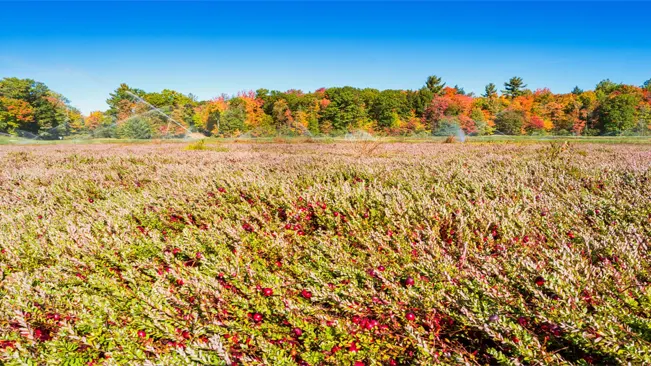
- Full Sun Exposure: Cranberries need full sun, which means at least six hours of direct sunlight daily. This is crucial for the development of buds and fruits.
- Shade Tolerance: While they can tolerate partial shade, this will likely reduce yield and fruit quality.
- Sunlight and Plant Health: Adequate sunlight also helps keep the plants healthy, reducing the likelihood of diseases and pests.
Planting Cranberries
Best Time to Plant
- Spring Planting: Planting cranberry vines after the last frost of spring is crucial. This timing allows the plants to establish themselves during the warmer growing months. In most temperate climates, this typically falls around late March to April.
- Frost Danger: Frost can damage new cranberry plants, so ensure all threat of frost has passed before planting. You can check local frost dates to time your planting correctly.
Planting Technique
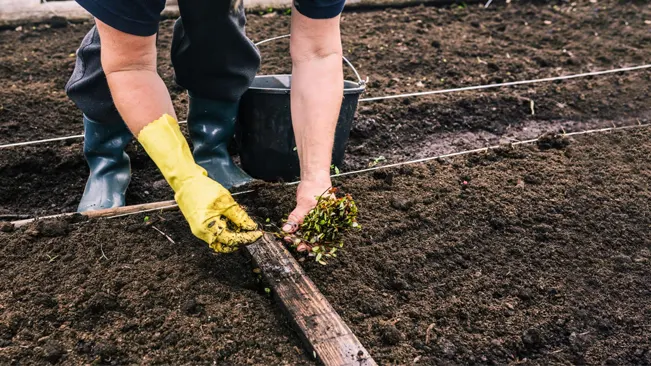
- Spacing: Planting vines 2 to 3 feet apart allows enough room for growth and air circulation. This spacing helps prevent disease and ensures each plant gets enough nutrients.
- Planting Depth: Plant the vines shallowly, with the roots just below the soil surface. Burying them too deep can hinder growth. The crown of the plant should be just at soil level.
- Soil Preparation: Prior to planting, ensure the soil is well-prepared. It should be loose, well-drained, and acidic. If necessary, amend the soil to reach the correct pH level (4.0 to 5.5). Adding organic matter can also improve soil quality.
Watering

- Consistency is Key: Cranberries have unique water needs. The soil should be consistently moist to mimic their natural bog habitat. However, avoid overwatering to prevent root rot.
- Method: Drip irrigation or a soaker hose can provide a steady, controlled amount of water. This is preferable to overhead watering, which can leave foliage wet and promote disease.
- Monitoring Moisture: Regularly check soil moisture by feeling the soil. It should be damp but not soggy. Adjust your watering schedule based on weather conditions and soil moisture level.
- Mulching: Applying mulch around the plants can help retain soil moisture and regulate temperature, reducing the frequency of watering.
Maintenance and Care
Weeding
Cranberry vines have a shallow root system, making them particularly vulnerable to competition from weeds. Weeds can quickly outcompete cranberries for essential nutrients, water, and sunlight.
- Regular Monitoring: Frequent inspection of your cranberry bed is crucial. Spotting and removing weeds early can prevent them from establishing and spreading.
- Gentle Weeding: Due to the shallow roots, care should be taken to weed gently, avoiding disturbing the cranberry plant’s roots.
- Preventative Measures: Using landscape fabric before planting can help reduce weed emergence. However, ensure it permits adequate water drainage.
Mulching
Mulching is beneficial for several reasons: it helps maintain soil moisture, suppresses weed growth, and keeps the soil at a consistent temperature. Furthermore, certain types of mulch can help maintain the acidic soil conditions that cranberries prefer.
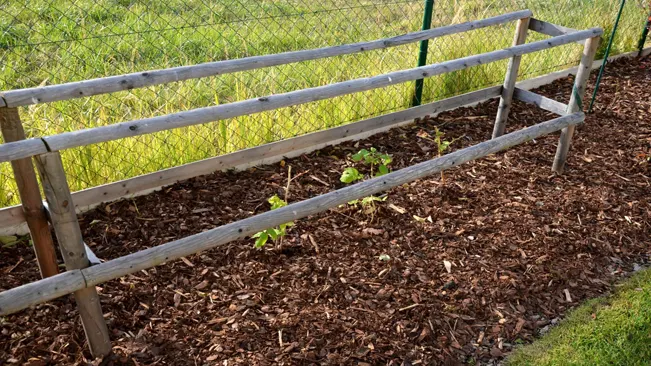
- Choice of Mulch: Pine needles are an excellent choice as they contribute to maintaining the acidic pH. Wood chips are also suitable but ensure they are not from wood that alters soil pH unfavorably.
- Application: Apply a layer of mulch about 2-3 inches thick around the plants, taking care not to pile it against the stems to prevent rot.
- Renewal: Refresh the mulch layer as needed, typically once a year, to maintain its benefits and to compensate for decomposition.
Pruning
Pruning cranberry vines is essential for promoting healthy growth, increasing yield, and managing pests and diseases.
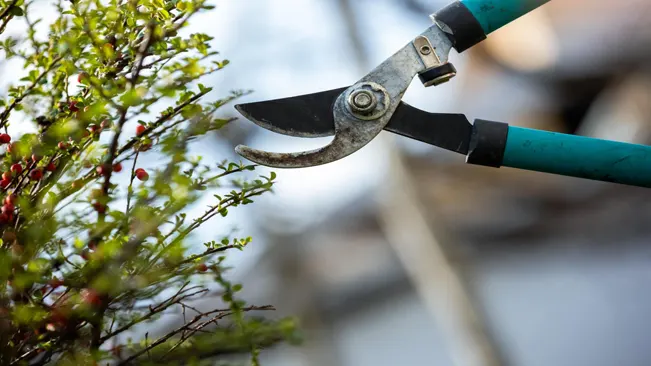
- Timing: The best time to prune cranberries is during the late winter or very early spring before new growth starts.
- Technique: Remove any dead or damaged wood. If vines are becoming too dense, thin them out to improve air circulation and light penetration.
- Pest and Disease Control: Pruning also helps remove parts of the plant that may be infected with pests or diseases, reducing the spread.
- Tools: Use sharp, clean pruning shears or scissors to make clean cuts that heal quickly.
Flooding for Pest Control and Harvest
Flooding for Pest Control
- Timing and Duration: Flooding for pest control typically occurs in summer. The timing is critical and usually corresponds to the life cycle of the target pests. The flooding is brief, often lasting just a few days.
- Purpose: This method is mainly used to control certain types of insects and larvae that harm cranberry vines. When the fields are flooded, these pests, which cannot survive under water, are drowned or forced to leave the habitat.
- Benefits: This method of pest control is environmentally friendly compared to chemical pesticides. It also avoids the risk of the pests developing resistance to chemical treatments.
Harvest Flooding
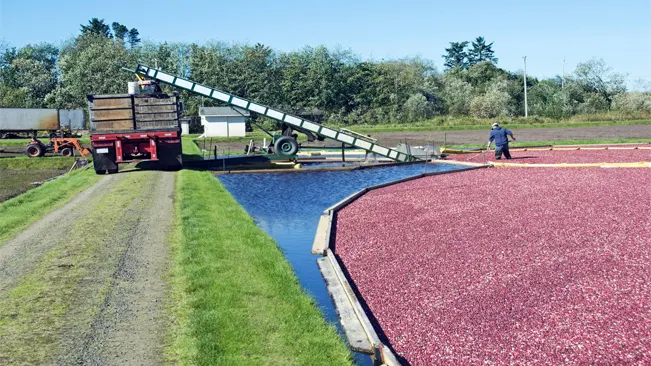
- Process: In the fall, usually from mid-September to November, cranberry fields are flooded to assist in harvesting. The fields are flooded with up to eight inches of water the night before the harvest.
- Berry Buoyancy: Cranberries have air pockets inside them, which makes them buoyant. When the fields are flooded, the berries detach from the vine and float to the surface, making them easier to collect.
- Harvesting Method: Farmers use water reels, often called “egg-beaters,” to stir the water and dislodge the berries from the vines. Then, the floating cranberries are corralled into a corner of the bog and vacuumed into a truck or pumped into a processing facility.
- Efficiency: This method is highly efficient for large-scale operations as it allows farmers to harvest up to six to seven acres of cranberries per day.
- Quality Control: After flooding, the berries are screened for quality. Only the best berries are sent for processing or sold fresh.
Environmental and Economic Considerations
- Water Use: While effective, this method requires a significant amount of water, which can be a concern in areas with water scarcity.
- Wet Harvest vs. Dry Harvest: Not all cranberries are harvested using the wet method. Some are dry-harvested, which involves using mechanical pickers to comb the berries off the vines. Dry-harvested berries are typically sold fresh, as they are less likely to be bruised than those harvested in water.
Harvesting Cranberries
Time to Harvest
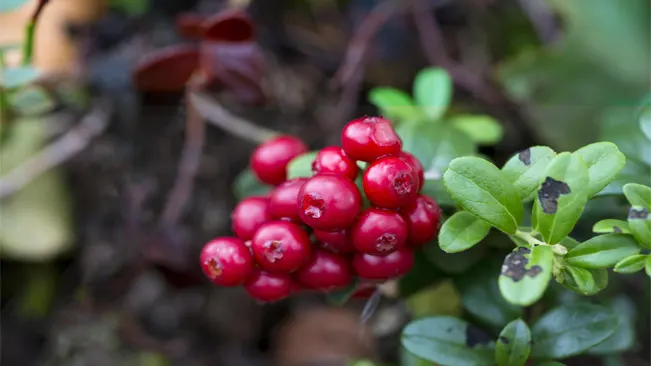
- Cranberries reach maturity in the fall, typically between September and November. The specific timing can vary based on geographic location and weather conditions during the growing season.
- The key indicator of ripeness is the color change. When cranberries turn from a light green to a deep, vibrant red, they are ready for harvest. This color change is accompanied by an increase in natural sugars, giving the berries their characteristic tart but sweet taste.
Methods of Harvesting
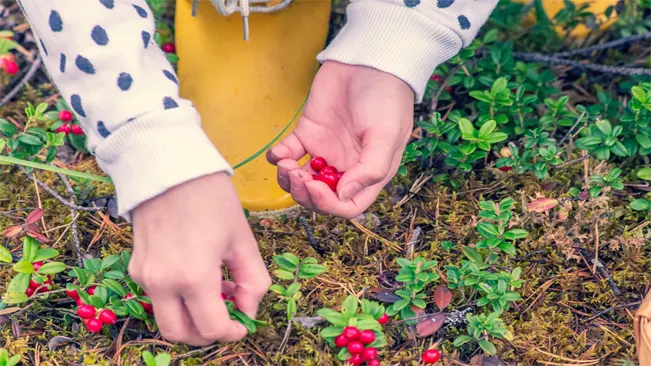
- Hand-Picking: This method is ideal for small-scale gardens or personal cranberry patches. It’s labor-intensive but allows for selective picking, ensuring only ripe berries are harvested. Hand-picking is gentle on the plants, reducing the risk of damage.
- Water-Harvesting: Used primarily in commercial cranberry farming, this method involves flooding the cranberry bog. Ripe cranberries have air pockets, which cause them to float. Once the bog is flooded, machines called water reels, or “egg-beaters,” agitate the water to dislodge the berries from the vines. The floating berries are then corralled and collected. This method is efficient for large-scale harvesting and has the added benefit of cleaning the berries.
Post-Harvest Storage
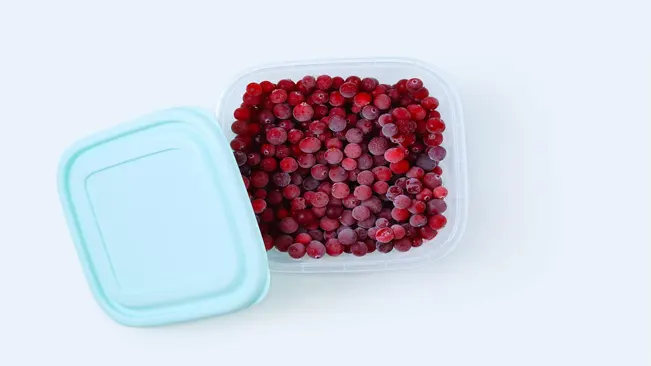
- Refrigeration: Freshly harvested cranberries can be stored in the refrigerator. They should be kept in breathable packaging, like mesh bags or perforated plastic bags, to prevent moisture accumulation, which can lead to mold. Properly stored, they can last several weeks in the fridge.
- Freezing: For long-term storage, cranberries freeze exceptionally well. To freeze, spread the berries in a single layer on a baking sheet and freeze until solid. Once frozen, transfer them to airtight containers or freezer bags. This method prevents the berries from clumping together, allowing you to use the desired amount as needed. Frozen cranberries can be kept for up to a year.
Conclusion
Growing cranberries can be a delightful and fruitful experience. It requires patience, specific soil and water conditions, and a bit of effort in terms of maintenance. Whether you’re a home gardener or looking to start a small cranberry patch, the rewards of harvesting your own cranberries are plentiful – both in terms of health and the satisfaction of cultivating something unique and flavorful.
FAQs (Frequently Asked Questions)
- What type of soil is best for growing cranberries? Cranberries thrive in acidic soil with a pH between 4.0 and 5.5. They need well-drained, sandy soil.
- Do I need a large body of water to grow cranberries? Not necessarily. While commercial bogs are often flooded, at home, you can grow cranberries in a garden bed or container with consistent moisture.
- How much sunlight do cranberries require? Cranberries need full sunlight. Choose a spot that receives at least six hours of direct sunlight daily.
- When is the best time to plant cranberry vines? The ideal time to plant cranberry vines is in the spring, after the last frost has passed.
- How do I water cranberry plants? Keep the soil consistently moist but not waterlogged. Overwatering can be as harmful as underwatering.
- Do cranberries need pruning? Yes, pruning in late winter is beneficial. It helps remove dead or diseased wood and encourages new growth.
- How long does it take for cranberry plants to bear fruit? Cranberry plants typically start bearing fruit 2 to 3 years after planting.
- What are common pests and diseases in cranberry cultivation? Common issues include fruit rot, leaf spot, and pests like cranberry weevil and cranberry fruitworm.
- How do you harvest cranberries? For small-scale gardens, hand-picking is common. The berries are ripe when they turn a deep red color and are firm to the touch.
- Can cranberries be grown in containers? Yes, cranberries can be grown in containers, provided they have enough space to spread and you maintain adequate moisture levels.
For more expert gardening and advice, explore our guides, discover top recommendations in our best section, and delve into in-depth product reviews in our review section. Happy Gardening.

Kristine Moore
Forestry AuthorI'm Kristine Moore, a seasoned garden landscaping professional with over 30 years of experience. My extensive career has been dedicated to transforming outdoor spaces into stunning, sustainable landscapes. With a deep understanding of horticulture, design principles, and environmental stewardship, I have become a respected figure in the field, known for creating harmonious, visually appealing, and eco-friendly gardens. My commitment to excellence and continuous learning in landscaping trends and techniques has solidified my reputation as an expert in garden design and implementation.
2 comments
Thanks very much for some hints on planting these plants for nutritious fruits and I am going plant them when spring starts in September. Have a lovely day.













My cranberries are thriving for the third season in a raised container box. I am hoping to learn how to amend the soil. This year I just sprinkled on an all around fertilizer. Please help!
Cindy Sauve
July 12, 2024 1:34 pm